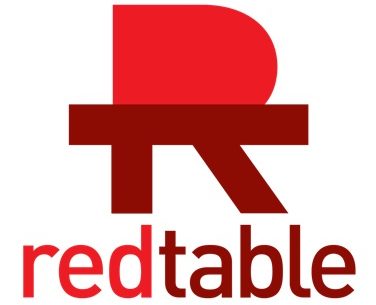Turkey beards have fascinated hunters, birdwatchers, and biologists alike for years. But what exactly are these unique structures made of? In this article, we’ll take an in-depth look at the anatomy and composition of turkey beards.
Turkey beards are the brush-like tufts of modified feathers that protrude from the chest of male turkeys, also known as toms. Some female turkeys may also develop smaller, wispier beards.
These unusual feathers are unlike regular body feathers. Instead of being soft and flexible, turkey beards are stiff, hair-like filaments that emerge from a raised oval of skin on the breast called a papilla.
While the purpose of beards remains uncertain, many experts believe they play a role in mate attraction and indicate the health and dominance of male turkeys. Let’s examine their structure and composition in more detail.
The Anatomical Structure of Turkey Beards
Turkey beards consist of specialized feathers known as mesofiloplumes that emerge from the papillae. The papillae form in a midline strip running between two feather tracts on the upper breast near the base of the neck.
Most male turkeys have just one papilla and thus one main beard. But some toms develop multiple papillae and grow several beards at once – occasionally up to 13! Even with multiple beards, there is usually a dominant, longer central beard.
The mesofiloplumes that make up turkey beards lack the soft barbs and barbules of regular feathers. Instead, they resemble stiff, hair-like bristles. Under a microscope, the individual filaments have a solid, cylindrical structure rather than the hollow rachis of body feathers.
The Protein Composition of Turkey Beards
What makes turkey beards so stiff and bristly on a molecular level? The answer lies in their protein composition.
Turkey beards are made mostly of β-keratin proteins Keratins are fibrous structural proteins found in hair, nails, horns, and feathers The β-keratin in turkey beards makes them hard and durable.
By contrast, normal turkey feathers contain more α-keratin which allows for more flexibility. The ratio of these keratin proteins helps explain the different texture of beards.
Melanin pigments are also abundant in turkey beard bristles, especially eumelanin which gives them their dark blackish-brown color. Lighter colored beards indicate less melanin production.
Beard Growth and Molting
Turkey beards start growing when males are just 16-20 weeks old The first papilla typically appears around this time
Beard bristles emerge soon after at 20-24 weeks of age. They then elongate rapidly, growing up to 6 inches per year. The growth rate slows as a tom ages.
Unlike regular feathers, turkey beards are not shed annually. Their bristles are permanent structures that simply wear down slowly over time. However, beards can break off from nutritional stress, harsh weather, or routine activities.
Record-Holding Turkey Beards
With continual growth, some turkey beards reach spectacular lengths. The longest on record was nearly 12 inches! Average beard lengths are 4-10 inches.
Long beards over 10 inches are highly prized by hunters as trophies. But length alone does not indicate a turkey’s age. Older males can have shorter beards due to breakage over the years.
Turkey beards are formed by specialized bristly feathers called mesofiloplumes that emerge from papillae on the breast. Composed of stiff β-keratin proteins and melanin pigments, beard bristles have a durable, hair-like texture unlike regular feathers. These unique structures grow rapidly after males mature and continue elongating throughout their lifetime. While the purpose of beards remains uncertain, they are an iconic feature of male turkeys.

Why do turkeys have beards? They won’t tell us, but we have a few ideas!
No one is sure why turkeys have beards, but most people think that a male turkey’s beard shows that it is in charge. Picking the right mate is especially important in the wild. Passing on strong genetic traits is important for the survival of the species. Often males fight for the honor of being the best and strongest in any species. Turkeys are no different, but why fight if you don’t have to? Fighting hurts and sometimes kills.
Being able to display good health and genetics is a lot easier to do. Birds typically do this through the color of their feathers. During mating season is when their feathers are the most vibrant and colorful. A male turkey, also known as a tom, has feathers that shine brightly in the sun when they strut. A turkey beard comes out of their chest as a modified set of feathers that never fall off. A beard will start growing shortly after the bird is hatched. It grows over the course of their lives. A turkey with a long beard is likely older, stronger, and more dominant for having lived longer. This would allow its offspring to be strong and have a greater chance of survival.
A short beard could be because of poor health. If the bird is struggling to eat well, the protein fibers the beard is made of become weaker. A change in color or a crimp in the beard can sometimes be seen as a sign of a change in growth.
It could also be a result of bad genes. Sometimes a turkey just will not grow a thick, full beard. This could prevent the tom from being selected as a mate. Merriam’s and some hybrid species are known to not have long, thick beards.
As they eat, their beards break off and drag on the ground, which also controls the length of their beards. In colder climates, ice and snow can accumulate on a beard causing it to break. The longest beard ever recorded was nearly 23 inches; anything over 12 inches is considered extremely unique.
There are some cases where toms will have multiple beards. It is not uncommon to see a double beard, but triples and beyond are considered very rare.
Multi Bearded Turkey & Turkey Beard Fun Facts
FAQ
Do turkey beards grow back?
What do people do with turkey beards?
Do all male turkeys have spurs?
What causes a turkey to have multiple beards?
